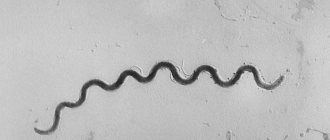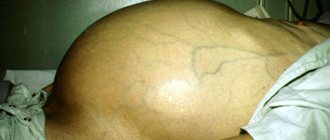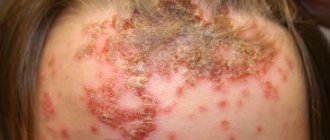Lymphadenitis, or inflamed lymph nodes, is a common pathology among the population, it does not depend on gender and age and can appear in everyone without exception, even with a cold. People do not pay attention to small tumors in the areas where the lymph nodes are located, for example, near the ear, on the throat, on the stomach, in the groin, and do not try to get rid of them - and in vain. Lymphadenitis is rarely an independent inflammation; it becomes a symptom of serious pathologies and infections occurring in the body. The pathology is easy to cure with proper therapy.
General information about lymph nodes
Lymph nodes (lymph nodes) are an organ consisting of a cluster of lymphatic vessels, which performs the following functions: cleaning lymph, preventing the proliferation of pathological cells (cancer), protection against the penetration and spread of infectious agents throughout the body, outflow of intercellular fluid and the formation of protective cells (lymphocytes, phagocytes, antibodies).
The lymph node has a round or oval shape, about 1 cm in size (the largest in normal condition), when pressed, they roll slightly, as if small subcutaneous wen, painless. Lymph is a fluid formed from tissue fluid that flows through lymphatic vessels and capillaries. Lymph consists primarily of lymphocytes, which are responsible for the immune response. The tissue fluid itself is a product of plasma filtration in the blood capillaries.
The lymphatic system is an important part of the vascular system, complementing the work of the cardiovascular system, which performs the functions of cleansing the cells and tissues of the body, and also plays an important role in metabolism. In addition, lymph delivers immune cells to the site of damage to the body and transports lipids. The lymphatic system does not have a pump, but it still moves at a slow pace under little pressure.
Where are the lymph nodes located?
There are many groups of lymph nodes in the body, the most famous of which are in the neck, in the armpit, in the groin, in the elbow and knee bends, in the chest and abdominal areas. Each group is called regional, and it consists of several lymph nodes. The above groups contain the largest number of lymph nodes. Each group is protection for those organs and tissues that are located near it.
Lymph nodes in the neck and other parts of the body may also be divided into smaller groups. So, they can be found on the neck - on the front and back sides of the neck, under the jaw and chin, on the back of the head and in the ear area. Having looked at the following photo of the cervical lymph nodes, the overall picture of where they are located will become clearer to you:
After the introductory information, we will now move on to consider the causes of inflammation of the lymph nodes.
Enlarged lymph nodes - causes
Let's start with the fact that enlarged lymph nodes, or lymphadenopathy, is a symptom of various unfavorable processes.
You can also say that this is a kind of “beacon” that indicates that it is in the organs of that localization that there are some health problems and they are already beginning to protect the body. For example, in case of inflammatory diseases of the upper respiratory tract of an infectious nature (sore throat, pharyngitis, laryngitis, runny nose, sinusitis and others), it is the cervical lymph nodes that will increase. With osteomyelitis, synovitis and bursitis in the knee area, the knee lymph nodes will increase, etc. How does lymph node enlargement occur? When an infection enters the body or an inflammatory process develops, the nearest lymph nodes produce protective cells, which, when accumulated, cause them to enlarge. Further, when the infection tries to spread throughout the body, the lymph nodes hold it within themselves, and the higher the infection of the body, the more pronounced the increase. The size of enlarged lymph nodes can reach 5 cm.
If nothing is done during the period of increase, i.e. methods for treating the primary disease, and leaving everything as it is, as a secondary disease, the process of inflammation of the lymph nodes may begin, sometimes with the formation of pus - lymphadenitis.
Systemic infectious diseases and other pathological processes in the body can cause simultaneous enlargement and inflammation of several groups of lymph nodes throughout the body.
The main causes of enlarged lymph nodes
- Entry into the body of an infection - viral (influenza viruses, parainfluenza, Coxsackie, herpes), bacterial (staphylococci, streptococci, Pseudomonas aeruginosa, Mycobacterium tuberculosis), fungal;
- Pathological cell division leading to the formation of tumors;
- The presence of inflammatory processes;
- The presence of the following diseases - acute respiratory infections (tonsillitis, pharyngitis, laryngitis, tracheitis, bronchitis, pneumonia, influenza), sinusitis (sinusitis, rhinitis, ethmoiditis, sphenoiditis, frontal sinusitis), otitis media, scarlet fever, measles, dermatoses, furunculosis, gingivitis, caries, periodontitis, rheumatism, sarcoidosis, syphilis, rheumatoid arthritis, Lyme disease, tuberculosis, brucellosis, systemic lupus erythematosus, Sjogren's syndrome, gout, osteomyelitis, infectious mononucleosis, HIV infection, AIDS, lymphoma, wounds;
- An allergic reaction to any product or substance, which causes overproduction of protective cells;
- Weakened immune system - stress, hypovitaminosis, vitamin deficiencies, hypothermia, chronic fatigue;
- The presence of a benign or malignant tumor;
- Mechanical injury to a lymphatic vessel or node;
- Alcoholism;
- The use of certain medications - Atenolol, antibiotics (cephalosporins, penicillins, sulfonamides), Quinidine, Carbamazepine, Captopril, Hydralazine, Pyrimethamine and others.
Read also Fever - causes, symptoms and treatment
There are a huge number of reasons for enlargement and inflammation of the lymph nodes, but most of them can be classified into 3 main groups - inflammatory processes, infection, oncology.
How to treat swollen lymph nodes
Lymph nodes become inflamed for various reasons, so treatment should not be aimed at eliminating symptoms, but at stopping the disease that triggered its occurrence. To diagnose the underlying disease, you need to go to a medical facility.
Drug therapy
For inflammation of the lymph nodes, doctors prescribe non-steroidal anti-inflammatory drugs. Diclofenac, Ibuprofen, Nise gels are used. Under the influence of such medications, the area of redness decreases, swelling decreases, inflammation subsides, pain stops, and body temperature normalizes.
Inflamed lymph nodes are treated with Vishnevsky ointment (balsamic liniment), ichthyol cream. Thanks to such remedies, the glands become less dense and pain is relieved. Positive dynamics are observed during treatment with hormonal drugs: Prednisolone, Dexamethasone in tablets and injections. Antiviral agents in the form of ointments and tablets (Cycloferon, Arbidol, Kagocel) and immunostimulants are often prescribed.
Surgical intervention
When a lymph node is inflamed, under no circumstances should you heat the painful area, apply compresses, or undergo physiotherapy - such activities are fraught with aggravation of the nature of the inflammatory process and a deterioration in the general condition. If purulent inflammation of the lymph nodes begins, urgent surgical intervention is required.
Depending on the patient's condition, the operation can be performed under local or general anesthesia. After opening, the lymphoid glands are drained, removing tissue that has undergone necrosis. Drainage from tampons soaked in antiseptics is placed in the wound. The patient is given dressings within a week. The cleaned wound heals by secondary intention (without stitches).
The removed tissues are sent for histological examination. If the test result is positive, the patient is observed by oncologists. It should be borne in mind that inflammation of the lymph nodes can develop due to cancer of the lungs, kidneys, and stomach.
Folk remedies
For inflamed lymph nodes, traditional methods of treatment can be used, but only in tandem with conservative drug or surgical therapy. Mild forms of the disease can be cured using the following folk remedies:
- Licorice root is a remedy that stimulates the removal of mucus from the respiratory organs. Indicated for inflammation of the bronchi, lungs and colds. Licorice root accelerates the removal of fluid from the intercellular space; this fluid is sputum, which is excreted through the bronchi, which contributes to their speedy cleansing of infection and recovery. Usually the medicine is prescribed to children and people with low blood pressure.
- Red clover. It is characterized by the same properties, but is recommended for normal and high blood pressure.
- Rosehip, oats, yarrow.
- Leaves of a young blackcurrant bush, raspberry leaves.
A mild form of inflammation of the lymph nodes can be cured with the help of anti-inflammatory mixtures from several herbs: birch buds, oregano, St. John's wort, echinacea. Pour 200 ml of boiling water into a spoonful of the mixture and let it brew. This decoction is drunk within one day.
To prevent serious disturbances in the functioning of the lymphatic system, preventive procedures should be carried out, and possibly completely change your lifestyle. It is necessary to stop drinking alcohol, smoking, do exercises daily, strengthen the body, eat moderately, treat infectious diseases in a timely manner and drink more fluids.
Causes of enlarged lymph nodes
If the lymph nodes increase in size, this may indicate the following disorders:
- entry into the body of bacterial, viral and fungal infections;
- neoplasms;
- presence of inflammation;
- acute respiratory infections;
- angina;
- caries and gingivitis;
- periodontitis;
- pneumonia;
- syphilis;
- otitis;
- gout;
- infectious bone lesion;
- Filatov's disease;
- lymphoma;
- presence of wounds;
- blood infections;
- trauma to the lymphatic vessel and node;
- HIV infection and AIDS;
- gout;
- allergy to chemicals, product
- weakened immune system;
- alcohol abuse.
When an infection enters the body, an inflammatory process develops. The nearby lymph nodes begin to actively form protective cells, which, when accumulated, provoke their enlargement. The infection then continues to spread throughout the body. If the pathological condition is not treated, lymphadenitis develops, accompanied by pus. Systemic infectious diseases can simultaneously cause lymphadenopathy and lymphadenitis.
In addition, inflammation of the lymph nodes occurs when using certain antibacterial drugs.
Pathogenesis
The pathogenesis of lymph node hyperplasia varies significantly depending on the mechanisms of damage, among which are:
- inflammatory reaction in the lymph nodes due to direct exposure to an infectious agent;
- immunological reaction ( reactive hyperplasia ), developing against the background of pathogenic aggression (the presence of a generalized infection/remote source of infection or an autoimmune process);
- infiltration of lymph nodes by tumor cells during metastasis by the lymphogenous route;
- local proliferation of lymphocytes/macrophages in lymphomas / leukemias ;
- macrophage infiltration of lymph nodes with the development of metabolic disorders.
Symptoms of enlarged lymph nodes
Enlarged lymph nodes are accompanied by the following symptoms:
- redness of the skin around the node;
- swelling;
- skin rash;
- discomfort when turning the head or swallowing;
- increased body temperature;
- chills;
- a sharp decrease in body weight;
- increased sweating;
- enlarged liver or spleen;
- impotence;
- runny nose;
- a sore throat;
- cough;
- poor appetite;
- nausea.
If the lymph nodes are enlarged, but there is no pain when pressing on them, then this may indicate allergies, a weakened immune system and tuberculosis. If there is pain, the cause of enlarged lymph nodes lies in infection. Enlarged and painless lymph nodes with uneven contours when pressed can be a sign of cancer. To the touch, such nodes are medium soft or hard.
Rubella in children can cause enlargement of the occipital lymph nodes and nodes in the neck. In tuberculosis, the lesion covers the thoracic lymph nodes, which are deep and cannot be palpated.
With syphilis, the lymph nodes in the groin change in size. The process develops at a late stage of the disease, when a hard chancre has formed. The pathology is also characterized by the appearance of lymphangitis.
If the patient has HIV infection, enlarged lymph nodes can be observed anywhere. With AIDS they are constantly enlarged and inflamed.
Infectious mononucleosis is characterized by enlargement of the cervical lymph nodes up to 5 cm.
In a child, lymphadenitis can occur with scarlet fever or ARVI. The symptom may also be an immune response to a vaccine.
List of sources
- Bogomolov B.P. Differential diagnosis of lymphadenopathy // Klin. honey. - 1996. - No. 5. -S. 4-9.
- Rumyantsev A.G. Syndrome of enlarged lymph nodes as a pediatric problem / A.G. Rumyantsev, V.M. Chernov, V.M. Delyagin // Treatment. Doctor. - 1998. - No. 3. - P. 49-52.
- Zaikov S.V. Differential diagnosis of lymphadenopathy syndrome // Clinical Immunology. Allergology. Infectology. - 2012. - No. 4. — P. 16-24.
- Melikyan A. L. Non-tumor lymphadenopathy. Author's abstract. dis. ... doc. honey. Sci. - M., 2008.
- Kovrigina AM. Morphological characteristics of reactive changes in lymph nodes. Clinical Oncohematology 2009; No. 4: 297–306.
Inflammation of the lymph nodes - symptoms
Depending on the cause, enlargement (lymphadenopathy) and inflammation (lymphadenitis) of the lymph nodes can be of a different nature, for example:
- The lymph nodes have enlarged, there is no pain when pressing them - usually indicates an allergic reaction, weakened immunity, an inflammatory process, the initial stages of tuberculosis;
- Many small enlarged nodes indicate a weakened immune system;
- The lymph nodes are enlarged and painful - the most common cause is infection (the development of infectious diseases);
- Enlarged, immobile and painless when pressed nodes with uneven contours may indicate the need to consult an oncologist for examination.
The size of enlarged lymph nodes can vary from a few millimeters to several centimeters. They can also feel hard or semi-soft to the touch.
In addition, enlarged lymph nodes may be accompanied by the following symptoms:
- Redness of the skin around the enlarged lymph node;
- Discomfort, and even pain when swallowing, turning the head;
- Presence of rash, urticaria on the skin;
- Edema;
- Increased and high body temperature;
- Increased sweating, chills;
- Unreasonable, sudden weight loss;
- Enlarged spleen (splenomegaly);
- Enlarged liver (hepatomegaly);
- Loss of strength, painful condition;
- Cough, runny nose, sore throat;
- Lack of appetite, nausea.
What does the localization area mean?
The causes of inflammation of the lymph nodes can be determined by such a parameter as the location of the pathological process:
- Under the jaw (soft, mobile and painful) - a peritonsillar type abscess, periodontitis, caries, tonsillitis, measles or ARVI.
- Under the jaw (fused to the skin, lumpy and painless) – oncology of the salivary glands and oral cavity.
- Near the auricle (separated from adjacent tissues, elastic and painful) - carbuncle, furuncle, otitis media, inflammation of the earlobe.
- Near the auricle (fused and painless) - an oncological process in the skin or parotid area.
- Behind the auricle (painful and loose) – mastoiditis, otitis, suppuration.
- Behind the auricle (immobile and painless) – metastases or skin cancer.
- On the back of the neck (painful and mobile) - fungal diseases, lichen, phlegmon or boil.
- On the back of the neck (lumpy and painless, fused with tissues) - the development of a neoplastic process in the occipital area.
- On the front of the neck (painful and soft-elastic) - stomatitis, herpes, inflammation of the gums, pulpitis, osteomyelitis, tuberculosis and thyroid dysfunction.
- On the front of the neck (painless, adhesive and lumpy) - the development of tumors in the area of the mouth, lips and thyroid gland.
With inflammation of the lymph nodes only in the neck, we are talking about the presence of inflammatory processes in the neck, head, ears, skull bones and salivary glands. Similar changes in the body are characteristic of tonsillitis, thyroid dysfunction and toxoplasmosis.
If we are talking about damage to the lymph nodes in other parts of the body, then this may indicate the progression of diseases such as brucellosis, lupus erythematosus, infectious mononucleosis, subsepsis and HIV. With inflammation of the lymph node structures in the groin area, we can talk about the development of gynecological diseases.
Complication of lymph nodes
Complications most often result from chronic lymphadenitis with purulent formation.
Among the complications are:
- Periadenitis (inflammation of the tissues surrounding the inflamed node);
- Phlegmon;
- Thrombophlebitis;
- Fistulas in internal organs;
- Peritonitis, sepsis.
Diagnosis of lymph nodes
Diagnosis of lymph nodes includes:
- General examination, palpation, anamnesis;
- General blood analysis;
- Blood chemistry;
- Ultrasound examination (ultrasound);
- Fluorography;
- Radiography (X-ray);
- Setting tumor markers.
If necessary, a biopsy of the node may be performed.
Enlarged lymph nodes: reaction or disease?
So, the lymphatic system responds to everything that happens to the body, so assessing the condition of the lymph nodes is an important point in diagnosing many diseases. Sometimes lymph nodes indicate diseases of surrounding organs and tissues, and sometimes they indicate pathologies of the lymphatic system itself.
Read also Drug addiction - causes, symptoms, diagnosis and treatment
Lymphadenopathy
Enlargement of the lymph nodes by more than 1-1.5 cm (and in the inguinal nodes by more than 2 cm) is called lymphadenopathy. This definitely indicates problems with the health of the body. But about which ones - a doctor can tell you who you should contact.
There are 4 main causes of lymphadenopathy:
- Infection - bacterial, fungal or viral.
- Immune response of B and T cells.
- Tumor of lymphoid tissue (various lymphomas and some types of sarcomas).
- Metastases of a malignant tumor.
Not only the size of the lymph nodes changes, but also the structure of their surface (it can be smooth, or it can become lumpy), consistency (soft or dense, even hard), mobility of the nodes (they can “stick” to each other and to the tissues around). Also, changes in the lymph nodes can affect the skin around them - it can become swollen, hyperemic (reddened).
The most common case is enlargement of the cervical and submandibular lymph nodes in various diseases that affect the throat and pharynx, for example, tonsillitis or pharyngitis, as well as other respiratory diseases.
Fact!
Lymph nodes can become a haven for prion infections. For example, in 2007, German scientists demonstrated how prions spread from the site of infection to the central nervous system.
Rubella causes enlargement of the occipital, parotid and cervical lymph nodes, several hours before the appearance of the rash - this is one of the very first symptoms of the disease.
With tuberculosis, the thoracic lymph nodes, which are deep and cannot be palpated, are most often affected, after which it is the turn of the superficial lymph nodes, but this usually occurs at a late stage of the disease.
With syphilis, the inguinal lymph nodes become enlarged - and also at a fairly advanced stage of the disease, when a chancre has already formed. Against the background of syphilis, inflammation of the lymphatic vessels - lymphangitis - can develop.
Against the background of HIV, any lymph nodes anywhere can enlarge. If AIDS develops, the lymph nodes remain enlarged and become inflamed.
Regional lymph nodes, that is, those located right next to one or another organ, become enlarged in autoimmune diseases - depending on which organ we are talking about. In this case, the immune system and “customs control” in the form of lymph nodes begin to consider the cells of one’s own body as “strangers.” As a consequence of this struggle, there is an increase in lymphoid tissue in the area of the nodes.
Finally, enlarged regional lymph nodes are observed in cancer. They are located near the affected organ. Their increase is a characteristic symptom that tells the oncologist about the progression of the disease.
Some malignant tumors can mimic lymph nodes. Swiss scientists reported in 2010 that cancer cells produce a protein that is normally found in healthy lymph nodes. As a result, the outer layer of the tumor turns into lymph-like tissue. For T cells, it looks like the surface of a lymph node, which is not dangerous. This is how malignant tumors successfully hide from the immune system.
Lymphadenitis
Lymphadenopathy is a signal of the presence of inflammation in other organs or tissues. And lymphadenitis means that the infection has penetrated into the lymph nodes themselves and caused their inflammation. Most often, this is the result of the introduction of pathogenic microorganisms - staphylococci or streptococci - from a diseased organ with blood or lymph. The source of infection may be a whitlow, a boil or carbuncle, a wound that has become infected, erysipelas, an abscess, etc. Lymphadenitis also develops against the background of such dangerous infections as syphilis, gonorrhea, tuberculosis, tularemia, anthrax, etc. Inflamed lymph node - This is a barrier that prevents bacteria from spreading throughout the body. If treatment is not started in a timely manner, purulent lymphadenitis may develop and the threat of sepsis may arise.
Lymphedema
With this disease, the flow of lymph is disrupted, it begins to stagnate (lymphostasis) and edema develops, most often in the lower extremities. In most cases, the reason for this is pathologies of the lymphatic vessels: the valves located in them stop working, or the walls of the vessels cannot contract in a healthy manner. Lymphedema can also develop due to cancer, erysipelas, or as a side effect of chemotherapy.
Lymphoma
There is also cancer that affects the lymphatic system itself. We are talking about two types of lymphomas: Hodgkin lymphomas (lyphogranulomatosis) and non-Hodgkin lymphomas, which unite about 80 types of malignant tumors.
Read also Vitamin B3 (Niacin, Vitamin PP, Nicotinic acid). Functions, sources and uses of nicotinic acid
Classification
The classification is based on several factors.
According to the prevalence of lymphadenopathy, they are distinguished:
- Local (local) lymphadenopathy in which there is a single increase in lymph nodes in any one area (single supraclavicular, cervical, etc.).
- Regional lymphadenopathy, which is characterized by an increase in several nodes in one/two adjacent areas (for example, submandibular/occipital, axillary/supraclavicular, cervical/supraclavicular, etc.).
- Generalized lymphadenopathy is characterized by enlarged lymph nodes with their localization in three overlapping areas or more (axillary, cervical, supraclavicular, etc.).
According to the nature of the course, acute, recurrent and chronic are distinguished.
According to the duration of the pathological process: short-term lymphadenopathy (up to 2 months); prolonged (more than 2 months).
Treatment of lymph nodes
How to treat lymph nodes? Treatment of lymph nodes is aimed at eliminating the root cause of this condition.
If you cure the disease that led to enlarged nodes, they themselves will shrink and normalize in size. Initially, if enlarged lymph nodes are caused by infection, then the type of pathogen is identified, after which a specific drug is prescribed:
- If the cause is a bacterial infection, antibiotics are prescribed;
- If the cause is a viral infection, symptomatic treatment is prescribed, with the exception of some diseases that require the use of antiviral drugs (Acyclovir for herpes, drugs with interferon for ARVI, etc.)
- If the cause is a fungal infection, antimycotic drugs (Ketonazole, Clotrimazole) are used.
Treatment of enlarged lymph nodes of an allergic nature is carried out with the use of antihistamines (Loratadine, Suprastin), and it is also necessary to remove the causative agent of the allergic reaction.
Other recommendations and methods for treating lymph nodes include:
- Drink plenty of water - from 2 liters of water per day (adults) and 1 liter (children);
- To relieve high body temperature, take anti-inflammatory drugs Paracetamol, Nurofen, Nimesil. Children are recommended to make compresses based on water and vinegar.
- In case of severe inflammation, hormonal drugs (glucocorticoids) may be prescribed - Prednisolone, Dexamethasone, Hydrocortisone.
- In case of severe weakness and pain, semi-bed rest and bed rest are prescribed.
Remember that treatment should first of all be aimed at eliminating the root cause of enlarged nodes, i.e. disease or pathological condition. There is no time to waste!
What should not be done with enlarged lymph nodes?
- Massage the enlarged node;
- Warm it up;
- Lubricate with warming or bactericidal ointments.
The above actions can lead to the infection leaving the node, entering the bloodstream and further spreading throughout the body.
Removal of lymph nodes
Removal of lymph nodes (lymphadenectomy) is performed in the following cases:
- Inflammation of the lymph nodes with the formation of pus;
- Cancer tumors and the presence of metastases.
Surgical intervention is performed due to the fact that, as we have already said, there is an infection in the lymph node.
Risk factors
How to treat inflammation of the lymph nodes? Let us remember that this pathology is only an external manifestation of the disease, so to solve the problem it is necessary to identify and eliminate the disease. In most cases, this can only be done in a clinical setting, after undergoing a full diagnostic examination.
Common causes of inflammation include colds and viral diseases. However, there are more dangerous factors. For example:
- immunodeficiency virus, sexually transmitted diseases;
- sore throat, flu and acute respiratory infections;
- disorders of the thyroid gland;
- tuberculosis;
- allergic reaction of the body to external irritants;
- oncology;
- ailments accompanied by edema: otitis media, gumboil.
In addition, people who abuse alcohol and nicotine are at risk. Alcohol-containing drinks and tobacco smoke reduce the level of the body's immune defense, which creates a favorable environment for the development of dangerous diseases.
Treatment of lymph nodes with folk remedies
Important!
Before using folk remedies, be sure to consult your doctor! Chamomile, sage. Pour 2 teaspoons of chamomile or medicinal sage with a glass of boiling water, let the product brew, strain and use as a rinse for the mouth and throat. This remedy will help cope with inflammatory processes in the oropharynx.
Ginseng. 2 tbsp. spoons of crushed ginseng root pour 500 ml of boiling water, then place the preparation in a water bath for 20 minutes. Then set aside the product to cool, strain and take 50-70 ml 3 times a day, 20 minutes before meals. A decoction of ginseng root strengthens the immune system.
Collection. Make a collection of the following ingredients - 3 parts of blackberry leaves, 2 parts of silver birch leaves, 2 parts of green rye stalks and 1 part of immortelle flowers, bud grass and wheatgrass rhizomes. Mix everything thoroughly and 2 tbsp. spoons of the mixture pour 500 ml of water. Then bring to a boil and simmer over low heat for about 2 hours. Strain and drink the resulting decoction 1/3 cup 3 times a day, after meals, for 12 days. It helps well against acute respiratory infections and other diseases that cause enlargement of the cervical lymph nodes.
Compress 1. Mix walnut leaves, oregano herb, yarrow herb and mistletoe herb in equal proportions. Fill the collection with water, bring to a boil, boil for another 5 minutes and set aside to infuse. Afterwards, soak a rag made of natural fabric in the product and tie it around the sore spot. Apply compresses until complete recovery.
Compress 2. Add 1 liter of white grape wine and 1 tbsp to an enamel pan. spoon of sorrel, then put the dish on the fire, bring to a boil, simmer over low heat for 5 minutes, set aside to infuse for 30 minutes. Soak a cloth in the product and apply it as a compress to the sore spot.
Prevention of lymph nodes
Prevention of swollen lymph nodes includes:
- Compliance with personal hygiene rules;
- Good nutrition, giving preference to foods enriched with vitamins and microelements;
- Avoid spontaneous use of medications;
- Timely consultation with a doctor in the presence of various diseases so that they do not become chronic;
- Avoid hypothermia;
- Avoid stressful situations or learn to overcome them - if necessary, change jobs;
- Lead an active lifestyle.
Infusion of medicinal herbs
To prepare an infusion of herbs for the treatment of lymph nodes using folk remedies, you need to take two spoons of St. John's wort, three spoons of wormwood, two spoons of oregano, one spoon of flax, two spoons of lungwort, two spoons of knotweed, one spoon of thyme, five spoons of birch leaves. The resulting mixture is taken in the amount of two spoons and poured with one liter of boiling water. The finished product should stand for one night. In the morning, the decoction is filtered and consumed instead of tea throughout the day.










